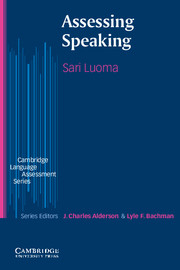Summary
Speaking skills are an important part of the curriculum in language teaching, and this makes them an important object of assessment as well. Assessing speaking is challenging, however, because there are so many factors that influence our impression of how well someone can speak a language, and because we expect test scores to be accurate, just and appropriate for our purpose. This is a tall order, and in different contexts teachers and testers have tried to achieve all this through a range of different procedures. Let us consider some scenarios of testing speaking.
Scenario 1
There are two examinees and two testers in the testing room. Both examinees have four pictures in front of them, and they are constructing a story together. At the end of their story, one of the testers asks them a few questions and then closes the discussion off, says goodbye to the examinees, and stops the tape recorder. After the examinees leave, the testers quickly mark their assessments on a form and then have a brief discussion about the strongest and weakest features of each performance. One examinee had a strong accent but was talkative and used quite a broad range of vocabulary; the other was not as talkative, but very accurate. They are both given the same score.
This is the oral part of a communicative language assessment battery, mostly taken by young people who have been learning a foreign language at school and possibly taking extra classes as one of their hobbies.
- Type
- Chapter
- Information
- Assessing Speaking , pp. 1 - 8Publisher: Cambridge University PressPrint publication year: 2004



